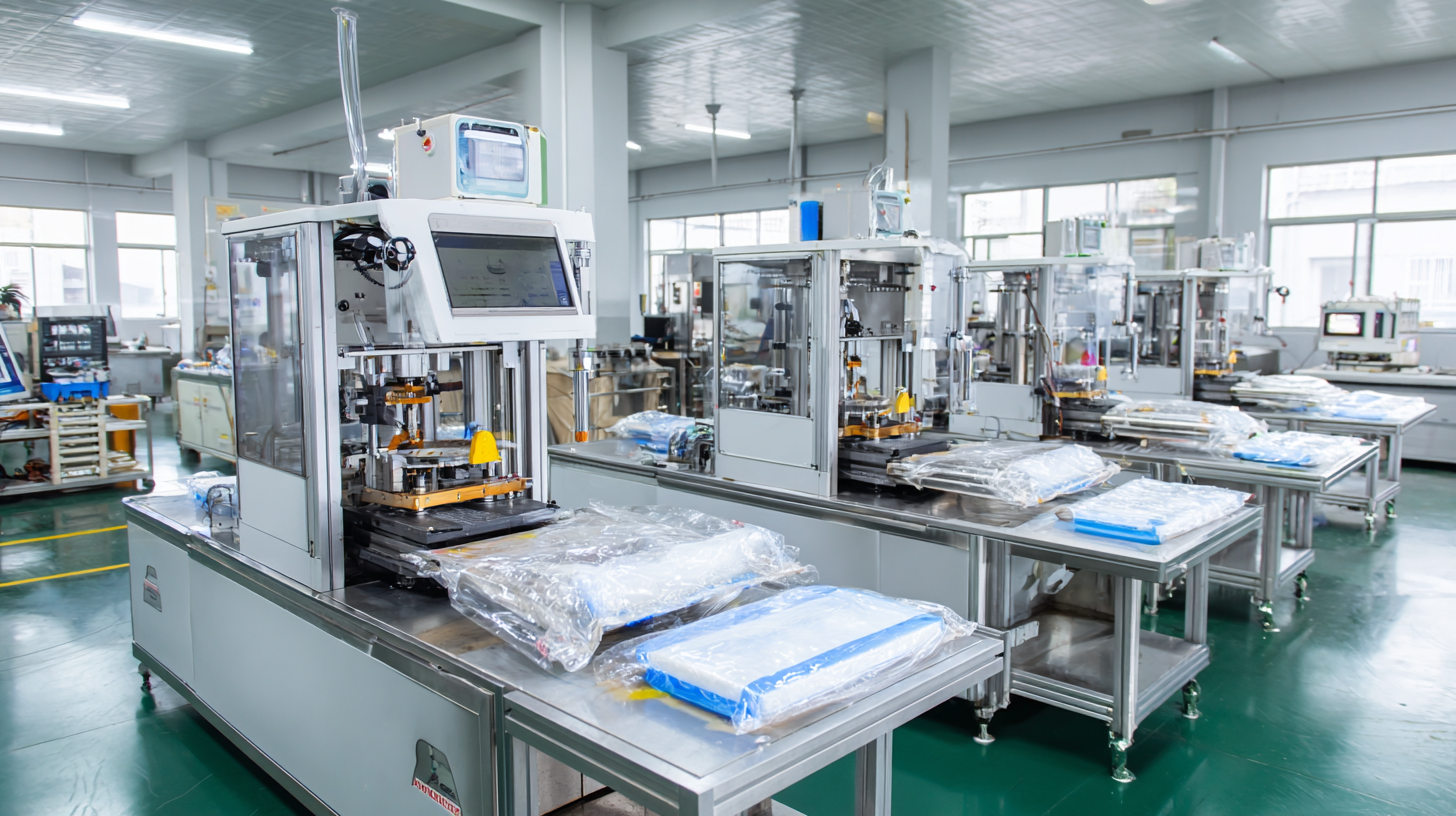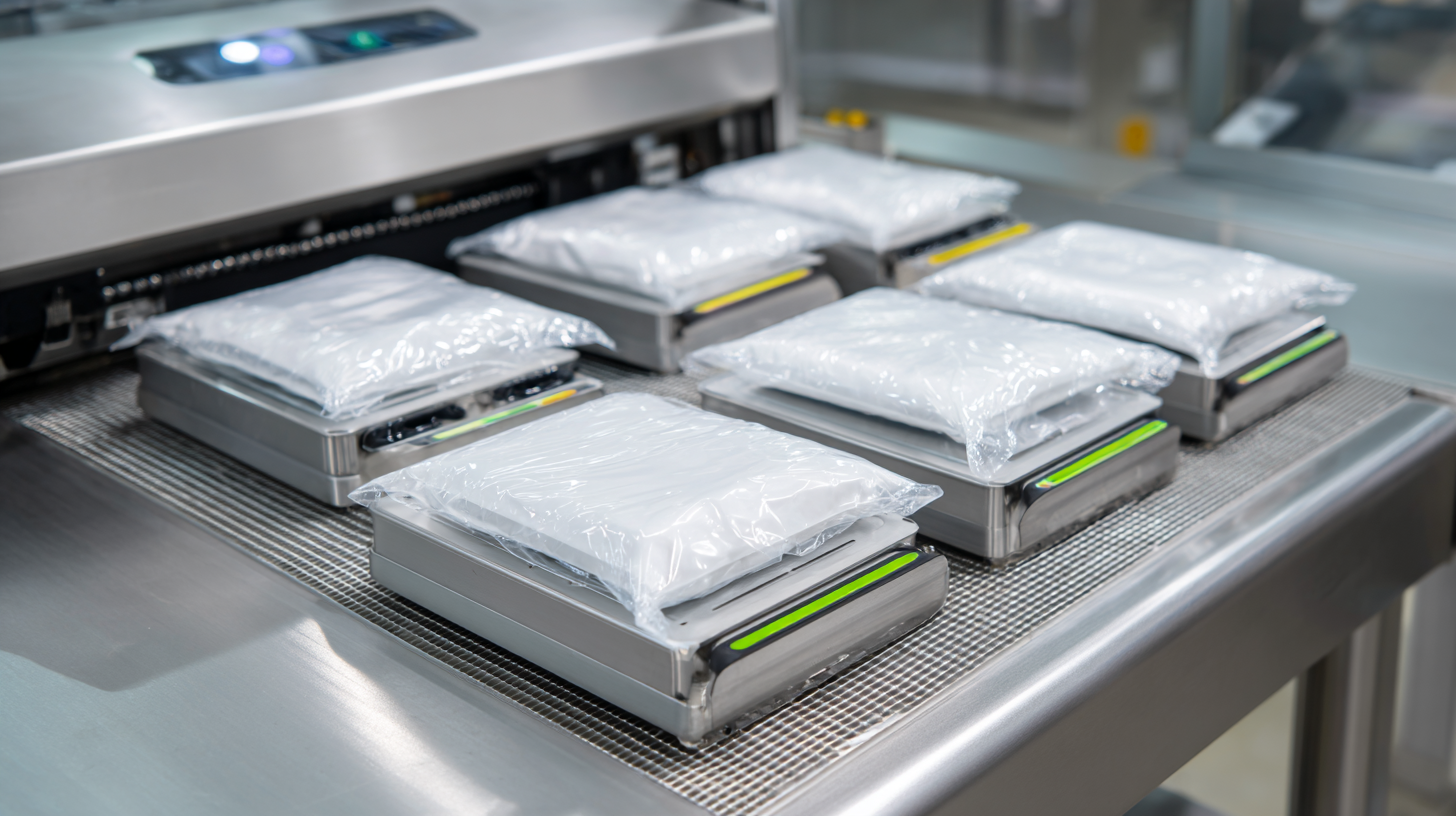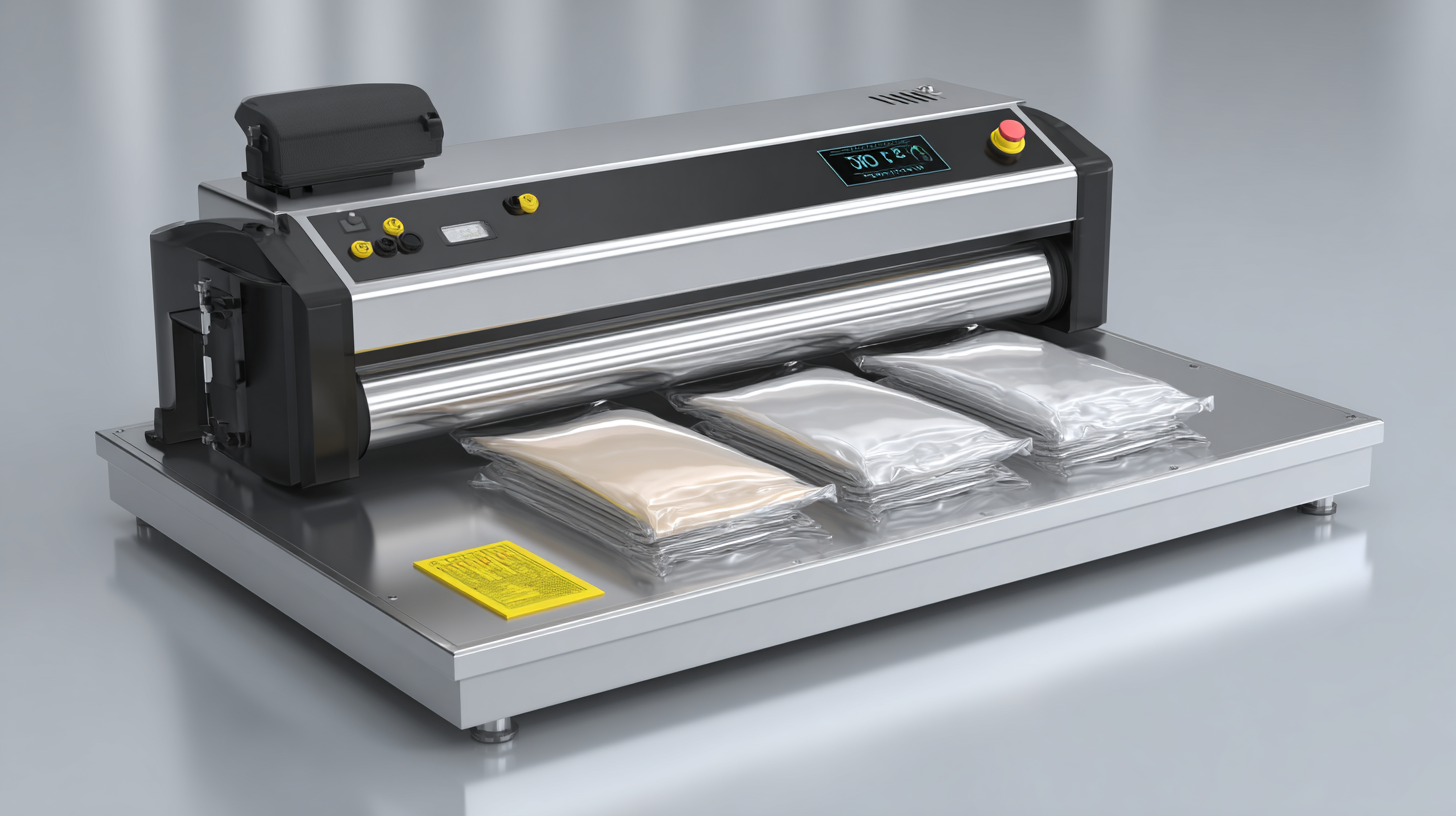About Us | Blog | FAQs | Tips/Troubleshoot | Contact Us | Machine Manuals | Demo Videos
Navigating Export and Import Certifications for the Best Commercial Vacuum Packing Machines in Global Markets
In the rapidly evolving landscape of global trade, the commercial vacuum packing machine market is witnessing unprecedented growth, driven by increasing demand for food preservation and packaging efficiency. According to recent industry reports, the market is projected to reach a value of USD 1.5 billion by 2027, growing at a CAGR of 6.2% from 2020 to 2027. As businesses expand their reach across international borders, understanding the intricate web of export and import certifications becomes essential for compliance and operational success. This blog aims to navigate the complex requirements associated with the import and export of commercial vacuum packing machines, providing valuable insights into the best practices and necessary certifications that ensure seamless market entry and competitive advantage in the global arena.

Table of Contents
[Hide]
Understanding Export Certifications for Commercial Vacuum Packing Machines
When exploring the global market for commercial vacuum packing machines, understanding export certifications is crucial. These certifications not only ensure compliance with international regulations but also enhance the product's credibility and marketability. Different regions may have varying requirements, which necessitates that manufacturers stay abreast of the specific documentation and standards required for each target market.

Tip: Before initiating the export process, conduct thorough research on the certification requirements for the countries you wish to enter. Engage with a regulatory consultant who specializes in export certifications to streamline the compliance process.
It’s also important to recognize that certain certifications, such as ISO standards or CE marking, can significantly impact the acceptance of your machinery in foreign markets. Ensuring that your machines meet these standards can provide a competitive edge, making it easier to penetrate market niches.
Tip: Build relationships with local distributors or partners who understand these certifications intimately. Their expertise can guide you through the complexities of compliance, helping to avoid costly delays or rejections during the export process.
Key Import Regulations Impacting Global Trade of Vacuum Packing Machines
Navigating import regulations is crucial for businesses engaged in the vacuum packing machine market, as these regulations significantly affect global trade. Various countries have established specific certification requirements aimed at ensuring compliance with safety and environmental standards. For instance, the European Union mandates CE marking for vacuum packing machines, indicating conformity with health, safety, and environmental protection legislations. Similarly, in the United States, the machines must comply with regulations set by the FDA and UL certifications, emphasizing the importance of thorough understanding of these varying requirements.
As the demand for efficient packaging solutions grows in sectors like food processing and logistics, the global market for vacuum packing machines is anticipated to witness substantial growth. Industry reports indicate that by 2032, the global vacuum packing machine market could exhibit a compound annual growth rate (CAGR) of over 6%, driven by rising e-commerce activity and the need for extended shelf life of perishable goods. Companies must stay informed about import regulations to effectively navigate the complexities of international trade, ensuring smooth market entry and compliance with all pertinent safety standards.
Quality Standards and Testing for Chinese Manufactured Vacuum Packing Equipment
When it comes to the global market for vacuum packing machines, understanding the quality standards and testing procedures for Chinese manufactured equipment is crucial. Chinese manufacturers have significantly increased their market share by producing high-quality vacuum packing machines that meet international standards. However, navigating the complex landscape of certifications can be daunting for buyers. Familiarity with standard certifications such as ISO 9001 and CE marking not only ensures compliance with quality assurance protocols but also fosters trust between manufacturers and buyers.
Testing for these machines often involves rigorous examination of various factors, including durability, efficiency, and safety. International buyers must ensure that the machines undergo standard tests such as electrical safety tests and performance evaluations before importation. Engaging with reputable Chinese suppliers who adhere to these testing protocols can help mitigate risks associated with quality discrepancies. Additionally, keeping abreast of updates in regulatory requirements is vital for businesses to remain competitive in the market, ensuring that they invest in equipment that is both reliable and certified for use in their respective regions.
Navigating Export and Import Certifications for Vacuum Packing Machines
Best Practices for Navigating Cross-Border Import and Export Procedures
When engaging in international trade, understanding the nuances of import and export procedures is paramount, especially in the commercial vacuum packing machine sector. According to a report by the International Trade Centre, the global market for packaging machinery, including vacuum packing machines, was valued at approximately $42 billion in 2020 and is projected to grow at a CAGR of 4.6% through 2027. Navigating this complex landscape requires businesses to adhere to various compliance standards and certifications to ensure seamless cross-border transactions.
Best practices for import and export procedures begin with thorough research on the specific certifications required in each target market. For example, the European Union mandates CE marking for vacuum packing machines to ensure they meet safety and environmental regulations. Companies should also stay informed about the Harmonized System (HS) codes pertinent to their products, as these codes simplify customs classifications, ensuring faster processing. Additionally, leveraging technology and partnering with local experts can facilitate smoother navigation through the often intricate regulatory frameworks, ultimately fostering a more robust export strategy.

The Role of Trade Agreements in Facilitating Vacuum Packing Machinery Trade
The vacuum packing machinery industry stands at a pivotal point, bolstered by international trade agreements that facilitate streamlined import and export processes. According to a recent market analysis, the global vacuum packaging market is projected to reach a value of approximately USD 38.5 billion by 2027, growing at a CAGR of 5.4% from 2020. This growth reflects not only the increasing demand for food preservation but also the expanding scope of applications across sectors such as pharmaceuticals and electronics.
Trade agreements play a critical role in supporting this industry by reducing tariffs and easing regulatory hurdles. For instance, agreements between major economies have enabled manufacturers to access new markets while maintaining competitive pricing. With significant investments in automation and technology, companies are enhancing their production quality and efficiency, which is essential for meeting the rising consumer expectations for packaging solutions.
The collaboration between industrial players, marked by strategic partnerships, further underscores the importance of collective efforts in driving market growth and innovation.

